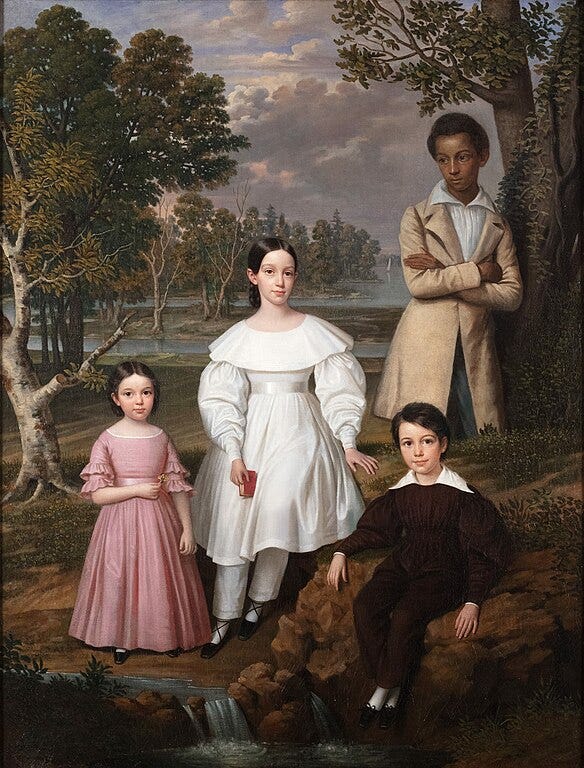Bélizaire: The Louisiana portrait that reveals an African Creole boy gone missing
Black history lesson from 'NAH' podcast: Learn about the enslaved boy who was removed from a painter's Louisiana portrait
Writer’s note on July 21, 2025: As a fan of Malcolm-Jamal Warner's work, a loyal listener of “Not All Hood” (never missed an episode and constantly left long-winded YouTube comments on Season 1), and who has a "thank you" note from him after seeing his band perform live at the DuSable Museum, my 💔 for his family. He loooooved bragging on how much he loved his wife and fatherhood. This “comrade” will definitely be missed. My condolences.
Recommended Read: “Malcolm-Jamal Warner has passed away and, nah, I'm not OK ~ From childhood to adulthood, fond memories of one of my favorite childhood stars”
I absolutely love “Not All Hood (NAH)” podcast. Next to “The Pivot Podcast” and Trevor Noah’s “What Now?” podcast (preferably when one guest host is not on the show), the reason I like these three podcasts is because I always learn something new.
I don’t even like sports, but I’m racing to my YouTube channel whenever a new “The Pivot Podcast” episode comes out. Kevin Hart aside, the episodes with just the trio have been better than they were with any celebrity guest.
And I’m a longtime supporter of Trevor Noah. I did not miss one episode of “The Daily Show” when he was on it and have loyally followed his later projects. (I read his book “Born a Crime” twice and probably will read it a third time.)
But there’s something special about “NAH,” and it’s not just that I get to see “Theo Huxtable” in a different light. I’d already gone through a starstruck moment while standing in front of Malcolm Jamal Warner and knew he gave real-life “Theo Huggable” vibes. (Rest in peace to Merlin Santana and that hilarious scene in the classroom.) But I did not know the other two cast members and just kept thinking, “Please let them be cool. Please don’t let them ruin this podcast.”
Not only is that not the case, but I sometimes forget Malcolm Jamal Warner is there altogether because I’m laughing or “mmm-hmming” to his co-hosts Candace O. Kelley and Weusi Baraka. He could not have picked two better co-hosts to balance discussions on racism, sexism, hip-hop and jazz, the economy, language arts, and education. I watch their podcasts and start digging up random history lessons and books after every single episode.
ADVERTISEMENT ~ Amazon
As an Amazon affiliate, I earn a percentage from purchases with my referral links. I know some consumers are choosing to boycott Amazon for its DEI removal. However, after thinking about this thoroughly, I choose to continue promoting intriguing products from small businesses, women-owned businesses and (specifically) Black-owned businesses who still feature their items on Amazon. All five of my Substack publications now include a MINIMUM of one product sold by a Black-owned business. (I have visited the seller’s official site, not just the Amazon Black-owned logo, to verify this.) If you still choose to boycott, I 100% respect that decision.

Last night’s episode may be my favorite of the bunch, mainly because I was blindsided by a black history and art lesson that I slept straight through last year. It was the kinda thing that I wondered if it would have made it to “The Cosby Show” wall like Ellis Wilson’s “Funeral Procession.”

In this case though, the painting was of a 15-year-old enslaved African Creole boy who’d been removed from a painting accredited to Jacques Amans, a French portraitist. Rumored to have been removed by an unknown source around the time of the Civil War, the young black boy was nonexistent in the portrait and all you would see in his place was the sky. (The Met museum suggests a member of the Frey family removed him from the portrait.)
I respect that someone found this strange space in the photo interesting enough to recover the existence of Bélizaire. But what’s up with him?



